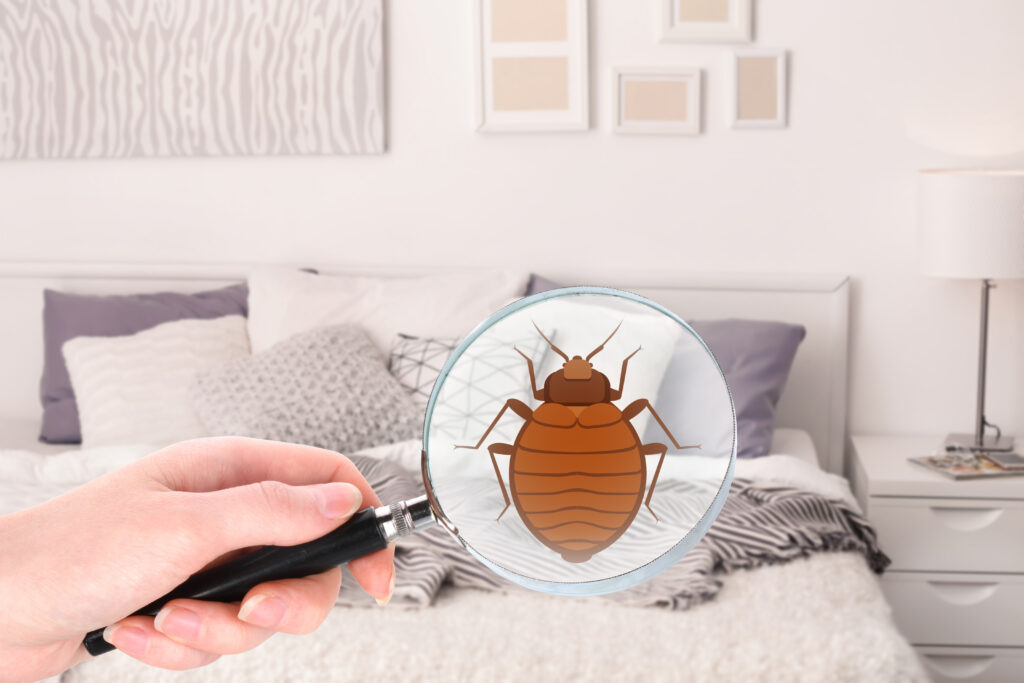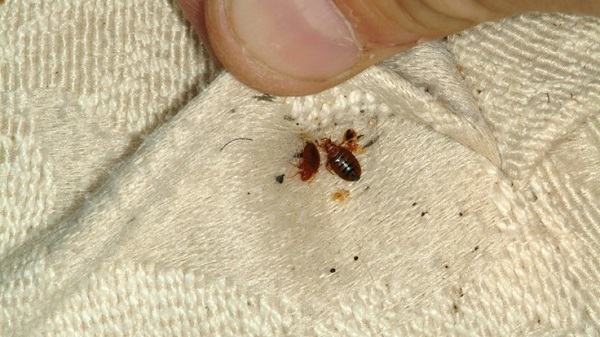Checking Out the Scientific Research Behind Bed Insect Heat Treatments as a Lasting Pest Monitoring Technique
One such approach that has actually gained traction in current years is the usage of warmth therapies to combat bed bug infestations. The ins and outs of just how warmth effectively eliminates bed bugs and the broader ramifications for lasting parasite monitoring practices make this a subject worth discovering further.
Bed Bug Heat Treatment Refine

Thermal Fatality Point for Bed Pests
Subjecting bed bugs to elevated temperature levels beyond their thermal resistance array is vital for achieving reliable removal in warmth treatment processes. The thermal fatality point for bed bugs describes the temperature at which these insects can not endure. Research suggests that bed pests start to perish when revealed to temperatures above 113 ° F(45 ° C) for a continual period. As the temperature boosts, so does the death price of bed pests. At around 118 ° F(48 ° C ), bed bugs begin to die quickly, with a death rate of almost 99% within minutes of direct exposure. This demonstrates the sensitivity of bed insects to heats and highlights the effectiveness of warm therapies in removing infestations. By reaching and preserving temperature levels above the thermal death point for bed insects, parasite management professionals can make sure thorough elimination of bed bug populations, including hard-to-reach locations where chemical treatments may be less effective. Comprehending the thermal fatality point for bed insects is essential for applying effective warmth therapy strategies and achieving sustainable pest management end results.
Benefits of Warm Treatments
Having actually developed the vital thermal fatality point for bed bugs, it is imperative to now discover the significant advantages that warm therapies use in successfully removing these durable pests. One of the key advantages is that heat can pass through deep into crevices and splits where bed insects conceal, ensuring that also the most hard-to-reach areas are warmed to lethal temperatures.
Additionally, warmth treatments are eco pleasant and safe, making them a sustainable bug administration strategy. Unlike chemical pesticides, warmth therapies do not leave harmful residues that can posture threats to human wellness or the atmosphere. This facet is specifically vital in sensitive environments such as medical facilities, institutions, and suburbs where chemical use might not be preferable.
Additionally, warm treatments have a high success price in removing bed pest infestations in a solitary therapy, lowering the requirement for several sees and minimizing disruption to passengers. This efficiency check that not just saves money and time yet also gives peace of mind to those managing bed bug problems.
Performance of Warmth Treatment

Research researches have continually demonstrated the performance of warm therapies in accomplishing a high price of bed insect death. Correctly performed warm therapies Your Domain Name can reach all the splits and crevices where bed insects may be harboring, ensuring a detailed approach to extermination. Furthermore, warm therapies have the added advantage of killing bed insect eggs, which are usually resistant to typical chemical treatments. On the whole, the efficiency of warmth treatments in removing bed pest problems makes them a lasting and reliable insect administration approach.
Lasting Pest Management Benefits
Applying lasting parasite administration methods offers long-term advantages for both the atmosphere and public health. By making use of approaches such as warm treatments for pest control, we can lower the reliance on hazardous chemical pesticides that can have adverse results on ecological communities and human wellness - bed bug treatment. Lasting pest monitoring approaches assist in preserving biodiversity by targeting details bugs without harming non-target microorganisms, thus maintaining a well balanced ecosystem
In addition, sustainable parasite administration techniques add to the general wellness and well-being of the general public. By minimizing exposure to hazardous chemicals used in conventional parasite control approaches, warmth treatments offer a safer alternative for bug management in household, industrial, and public rooms. This reduction in chemical usage additionally helps in stopping chemical residues from polluting water, air, and soil, safeguarding environmental top quality.
Conclusion
Finally, bed insect warmth treatments have been revealed to be a sustainable and efficient parasite monitoring technique. The thermal death point for bed insects makes them prone to warmth therapies, which have numerous advantages over conventional chemical therapies. The performance of warmth therapies in eliminating bed bug invasions while lessening ecological influence highlights the possibility of this approach as a lasting solution for pest control.
The bed bug warm treatment process includes increasing the temperature within plagued areas to a level that properly gets rid of bed insects and their eggs. By reaching and maintaining temperatures above the thermal death point for bed bugs, pest helpful hints management experts can make sure detailed removal of bed insect populations, including hard-to-reach areas where chemical treatments may be less effective. One of the primary benefits is that warmth can permeate deep into holes and splits where bed pests conceal, ensuring that even the most hard-to-reach locations are warmed to deadly temperature levels. Unlike chemical therapies that may leave behind resistant populaces, warmth treatments provide a non-toxic and eco pleasant service that can penetrate deep right into furnishings, wall surfaces, and other hard-to-reach locations where bed bugs conceal.
The thermal fatality point for bed pests makes them prone to heat therapies, which have many advantages over conventional chemical therapies.